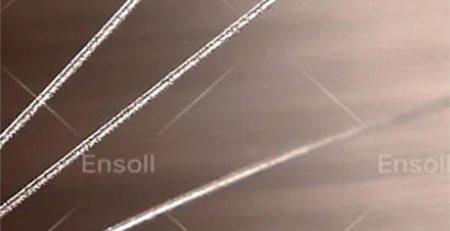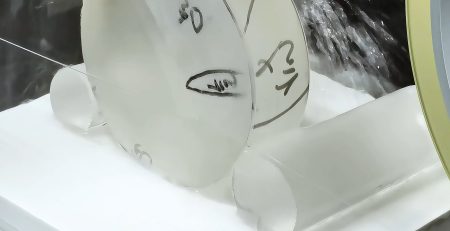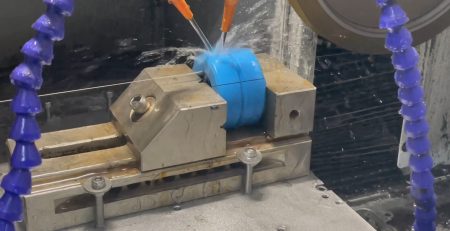酸化アルミニウムセラミックスの包括的なガイド
概要:
酸化アルミニウムセラミックスは、航空宇宙などの業界で非常に重要です, 電子工学, そして、その並外れた硬さによる医学, 耐摩耗性, and thermal stability. Their versatility makes them ideal for cutting tools, bearings, implants, and more, playing a vital role in modern manufacturing.
 What is Aluminum Oxide Ceramic?
What is Aluminum Oxide Ceramic?
Aluminum oxide ceramic, also known as alumina or Al2O3, is a versatile and widely used material known for its exceptional properties and applications across various industries. Let’s delve into the composition, 構造, production methods, and utilization of aluminum oxide ceramics:
1.Composition and Structure:
- Aluminum oxide ceramic is primarily composed of aluminum and oxygen atoms arranged in a crystalline lattice structure. This structure gives aluminum oxide ceramics their high strength, hardness, and thermal stability.
- The material’s properties can vary based on factors such as the purity of the alumina, the crystalline phase present, and any additives or dopants included in the ceramic matrix.
2.Production Methods:
- Aluminum oxide ceramics are typically produced through a process known as sintering, where fine alumina powder is compacted at high pressures and temperatures to form a dense ceramic body.
- Other methods such as hot pressing, cold isostatic pressing, and slip casting may also be used to manufacture aluminum oxide ceramics with specific properties tailored to different applications.
- The sintering process helps eliminate porosity and ensures a high degree of crystallinity in the final ceramic product, contributing to its mechanical strength and thermal properties.
3.Utilization and Applications:
- Durability: Aluminum oxide ceramics are known for their exceptional durability and hardness, making them ideal for applications requiring wear resistance and longevity. They are commonly used in wear components, cutting tools, and abrasion-resistant coatings.
- Thermal Properties: Aluminum oxide ceramics exhibit excellent thermal stability, with high melting points and thermal conductivity. This makes them suitable for use in high-temperature environments, such as in furnace linings, insulating components, および熱交換器.
- Electrical Insulation: Due to their insulating properties, aluminum oxide ceramics find applications in electrical components like insulators, substrates for electronic devices, and high-temperature electrical connectors.
- Biomedical Applications: In the medical field, aluminum oxide ceramics are utilized in dental prosthetics, joint replacements, and surgical instruments due to their biocompatibility and resistance to corrosion.
4.Variety of Forms:
Aluminum oxide ceramics are available in various forms, including dense monolithic components, ceramic coatings, and composite materials. These forms cater to a wide range of applications across industries such as aerospace, 自動車, 電子工学, and healthcare.
Characteristics of Aluminum Oxide Ceramic:
 1.High Hardness:
1.High Hardness:
- Aluminum oxide ceramics are renowned for their exceptional hardness, ranking next to diamond in terms of hardness. This property makes them highly resistant to abrasion and wear, ensuring longevity and durability in demanding applications.
- The high hardness of aluminum oxide ceramics enables them to withstand mechanical stresses and friction, making them suitable for use in components subjected to high wear conditions.
2.Excellent Wear Resistance:
- Due to their high hardness and structural integrity, aluminum oxide ceramics exhibit excellent wear resistance properties. They can withstand repeated friction and contact with abrasive materials without experiencing significant wear or deterioration.
- The superior wear resistance of aluminum oxide ceramics makes them well-suited for applications where components are exposed to harsh conditions, extending their operational lifespan and reducing maintenance requirements.
3.Thermal Stability:
- Aluminum oxide ceramics possess remarkable thermal stability, retaining their structural integrity and performance across a wide range of temperatures. They exhibit high thermal conductivity and resistance to thermal shock, making them suitable for use in high-temperature environments.
- The thermal stability of aluminum oxide ceramics allows them to maintain their properties under extreme heat conditions, ensuring consistent performance in applications where temperature fluctuations are prevalent.
4.Chemical Inertness:
- Aluminum oxide ceramics demonstrate exceptional chemical inertness, resisting corrosion and chemical attack from harsh substances. They are impervious to most acids, alkalis, and organic solvents, ensuring long-term stability in chemically aggressive environments.
- The chemical inertness of aluminum oxide ceramics makes them ideal for applications where exposure to corrosive agents or reactive substances is a concern, providing reliable performance and longevity in such challenging conditions.
Processing Methods for Aluminum Oxide Ceramic:
1.Diamond Wire Cutting:
- Precision: Diamond wire cutting utilizes a thin wire embedded with diamond particles to make precise cuts in aluminum oxide ceramics. The hardness of diamonds allows for intricate and accurate cutting, ensuring minimal deviations from the desired dimensions.
- Efficiency: This method offers high cutting speeds and efficiency, enabling rapid production of intricate shapes and designs. The continuous cutting action of the diamond wire results in smooth edges and precise outcomes.
- Minimal Material Loss: Diamond wire cutting produces minimal material wastage due to its thin kerf width. This results in cost savings and maximizes the utilization of the valuable aluminum oxide ceramic material.
2.Laser Cutting:
- Precision: Laser cutting is known for its precision and ability to create complex patterns in aluminum oxide ceramics. The focused laser beam allows for fine detailing and intricate cuts.
- Speed: Laser cutting can be a fast process, particularly for thin ceramic materials. It offers quick turnaround times for cutting projects.
- Heat-Affected Zone: One drawback of laser cutting is the potential for a heat-affected zone around the cut area, which can lead to thermal stress and potential damage to the ceramic properties.
3.Traditional Methods (e.g., Mechanical Cutting):
- 万芸: Traditional mechanical cutting methods involve the use of tools like saws or blades to cut aluminum oxide ceramics. While versatile, these methods may not offer the same level of precision as diamond wire cutting or laser cutting.
- Cost: Mechanical cutting can be cost-effective for simpler cutting tasks but may result in more material wastage and rougher edges compared to more advanced cutting techniques.
4.Advantages of Diamond Wire Cutting for Aluminum Oxide Ceramic:
- Superior Precision: Diamond wire cutting provides unmatched precision, making it ideal for intricate ceramic components and precise parts.
- Efficiency: The efficiency of diamond wire cutting allows for high-volume production with consistent quality and accuracy.
- Clean Cuts: The clean cuts produced by diamond wire cutting minimize the need for additional finishing processes, saving time and resources.
おわりに
Aluminum oxide ceramics are essential materials known for their exceptional properties and wide-ranging applications. When it comes to processing these ceramics, diamond wire cutting emerges as a superior technique, offering precision, 効率, and minimal material loss, making it the preferred choice for shaping aluminum oxide ceramic components with accuracy and effectiveness.











